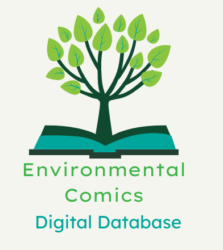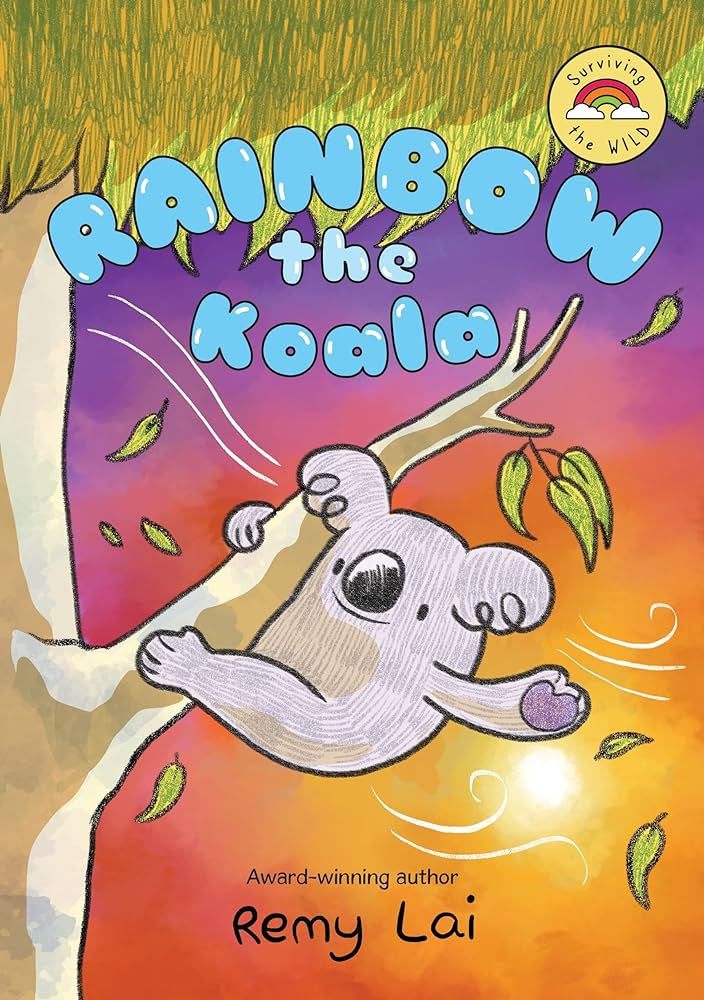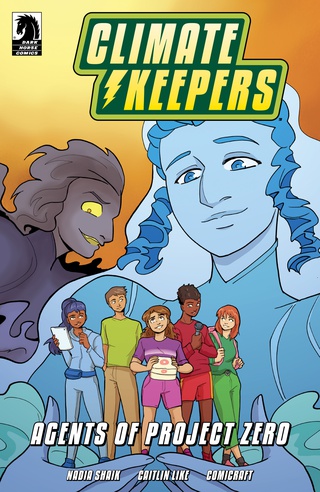“Just like the roots of the aspen, we’re all tied to each other, holding our cities or towns together” – Mayah, Mayah’s Lot, p. 17.
| Creator(s) | Charlie La Greca (writer and artist) and Rebecca Bratspies (writer) |
| Publisher | Center for Urban Environmental Reform |
| Publication Date | 2013 |
| Genre | Educational, Fiction |
| Environmental Issues and Themes | Corporations, Environmental Activism, Environmental Justice, Plants, Pollution |
| Protagonist’s Identity | Mayah: A young Black girl |
| Protagonist’s Level of Environmental Agency | Level 5: High Environmental Agency and Activism |
| Target Audience | Middle grade |
| Setting(s) | New York City |
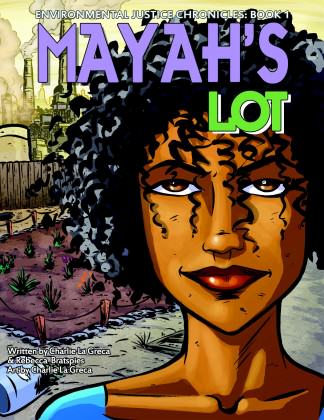
Cover of Mayah’s Lot
Environmental Themes
Produced by CUNY’s Center for Urban Environmental Reform (CUER), Mayah’s Lot explicitly seeks to educate children about environmental justice. The comic centers on Mayah, a young Black girl who discovers that a sinister corporation plans to transform a vacant lot in her urban neighborhood into a toxic waste storage facility. Mayah joins forces with her neighbors to halt the development by participating in different forms of environmental activism, including educating her peers, attending community meetings, and pursuing legal action. The comic concludes with the community defeating the corporation and working together to turn the lot into a public green space. By demonstrating child characters successfully engaging in a range of practical, community-based types of advocacy, the comic encourages young readers to participate in local environmental activism. Additionally, the comic emphasizes the importance of environmental justice by highlighting the intersections between environmental issues and racial inequalities.
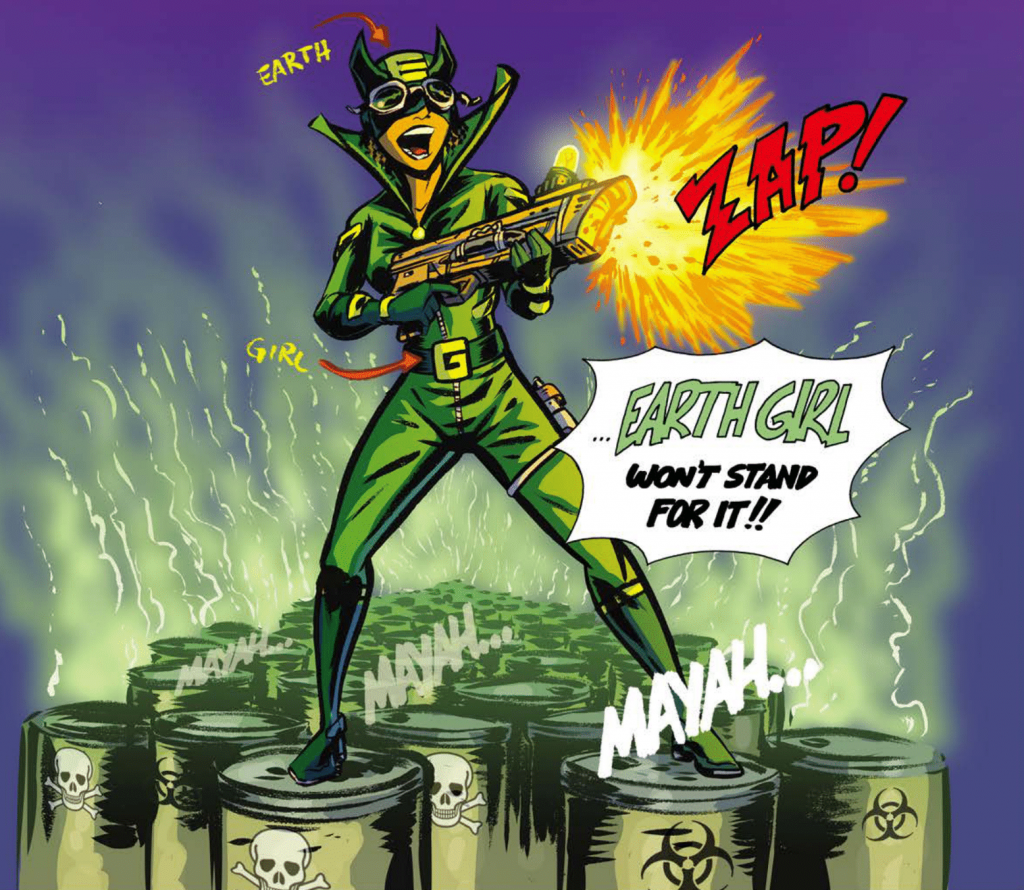
Creators Bratspies and LaGreca collaborated with middle school students at PS122Q, a school in New York City, to produce the final version of the comic. The students’ feedback led the creators to redesign one of the comic’s characters, Troop, and inspired the inclusion of a daydream sequence that departs from the more realistic and educational tone of the rest of the text. A free PDF version of the comic is available on the CUER website.
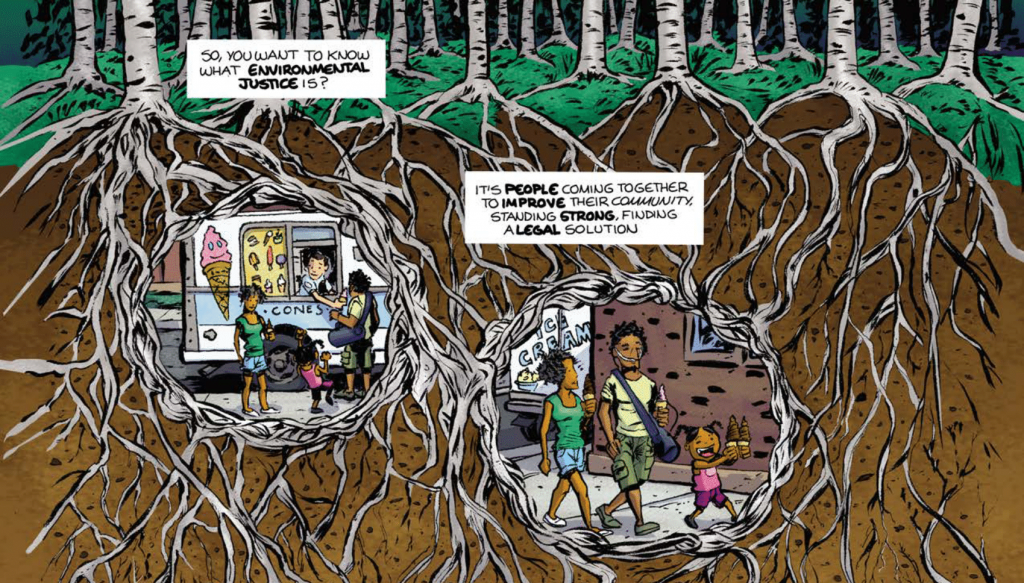
Paratexts
The comic includes several paratexts related to its overarching exploration of environmental justice. “A Note from the Editor,” written by Rebecca Bratspies, explains how the comic ties into CUERs environmental justice mission. She writes, “By empowering communities to make their voices heard in environmental decisions that will affect them, I believe that decisions will be more fair, more democratic, and better for both humans and the environment.” Additionally, the comic also includes 1 page of educational backmatter with a mini-glossary of terms related to environmental justice, as well as a list of recommended texts about the topic.
Additional Resources
Anderson, Brianna. ““Earth Girl Won’t Stand For It!”: Representations of Environmental (In)Justice in ‘Mayah’s Lot’ (2012)”, The Comics Grid: Journal of Comics Scholarship, no. 12, 2022, https://www.comicsgrid.com/article/id/6552/.
Bratspies, Rebecca. “Mayah’s Lot: Teaching Environmental Justice with Comic Books.” The Media Method: Teaching Law with Popular Culture, edited by Christine A. Corcos, 2019, pp. 505-523.
Frye, Brian L. “Rebecca Bratspies and Charlie LaGreca-Velasco on Legal Comic Books.” Ipse Dixit, season 1, episode 598, 2020, https://shows.acast.com/ipse-dixit/episodes/rebecca-bratspeis-and-charlie-lagreca-velasco-on-legal-comic.
